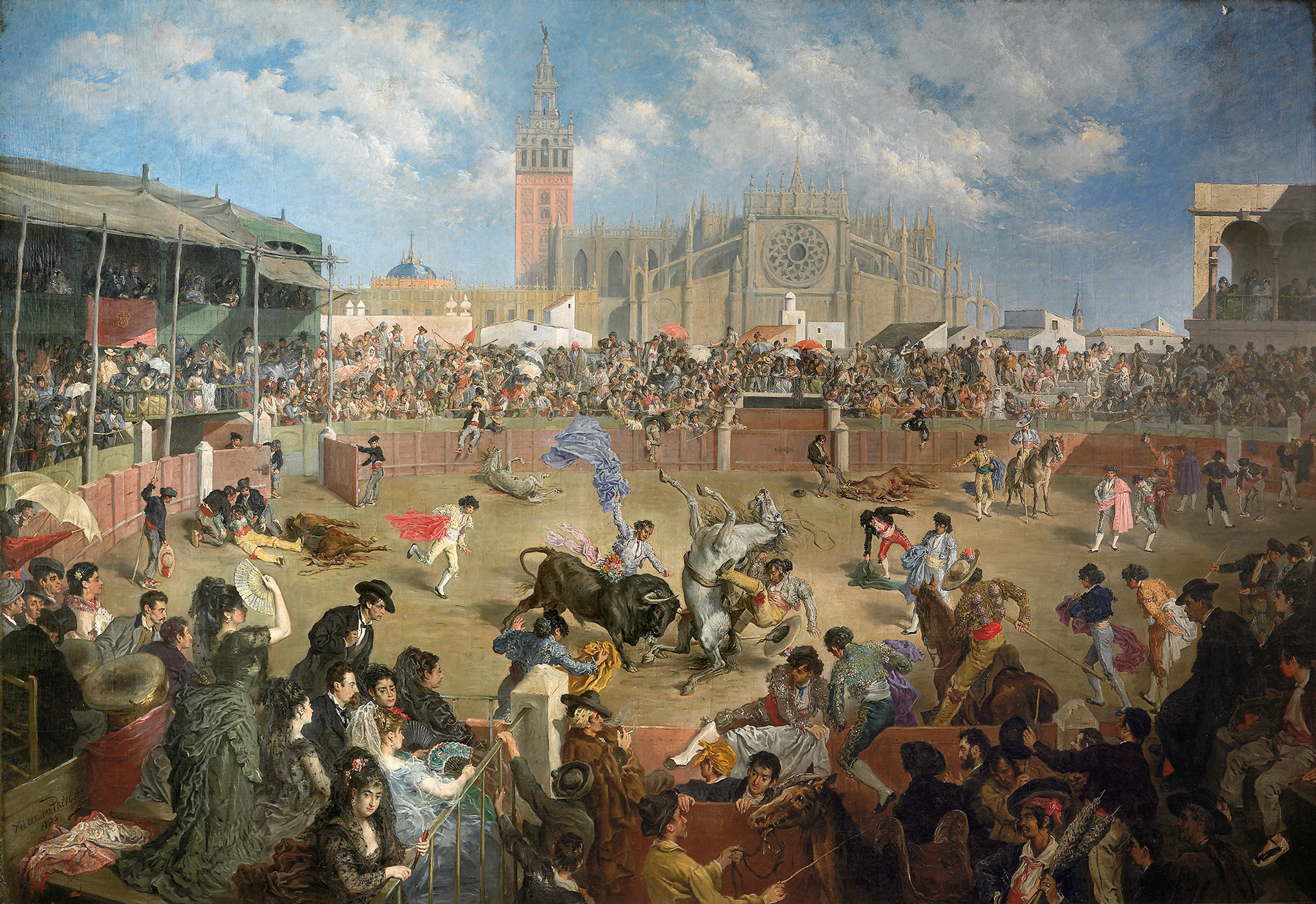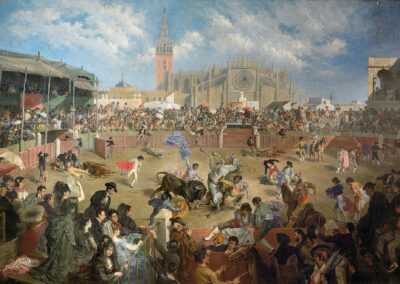This large-format canvas, signed and dated by the French painter Alexandre Prevost in 1875, represents the swan song of one of the most successful iconographies of Romantic Seville, fixed by the foreign gaze of the British, French and Germans in the 1830s as an illustration for the travel books that the revolution in the world of intaglio engraving made available to the bourgeois public of northern Europe at affordable prices. A public whose imagination had been built on the veneration of the medieval world and the attraction of the Orient transmitted by the literature of evasion - with the pioneering Ivanhoe, of tournaments and crusades, by Walter Scott as the most widely read book of the whole century - a sensibility on which the stereotypes of national characters and the differential features of peoples would be consolidated as a historical amalgam of cultures whose mould would have been forged in that period. The peculiar physiognomy of the Spanish would thus be reflected in a spectacle of a Moorish and noble nature, while its origin, as was maintained in the mid-19th century, would be a mutation introduced by the Muslim nobility of the Roman gladiatorial fights and practised by the Castilian nobility, following the example of the Cid, to show that it was superior to the former in effort and valour (J. A. González Alcantud, 1999, pp. 72-74). In Seville, it was another Scotsman, David Roberts, who, on his journey of 1832-33, established the most successful model (F. Olmedo Granados, 2003, pp. 113-161). 113-161), of which this canvas exaggerates some features: an agitated scene of a bullfight in the foreground, with the suerte de varas and, particularly, the fall of the picador as the main protagonist, surrounded by the architecture of an unfinished bullring, which resembles the archaeological ruin of a circus, with the cathedral as a background and metaphor for the fusion of Gothic and Moorish, attended by a boisterous and picturesque audience.
Barely a year after this canvas was executed, the municipal architect Juan Talavera y de La Vega began work that would make it impossible to take this view from life again, as among many other transformations it involved closing the ring with a new forty-arched grandstand, a work completed in 1881. This circumstance, together with the advent of photography, have been put forward as the causes of the disappearance of this iconographic model, which had had its moment of splendour in the middle of the century, under the patronage of the flamboyant court of the Dukes of Montpensier.


